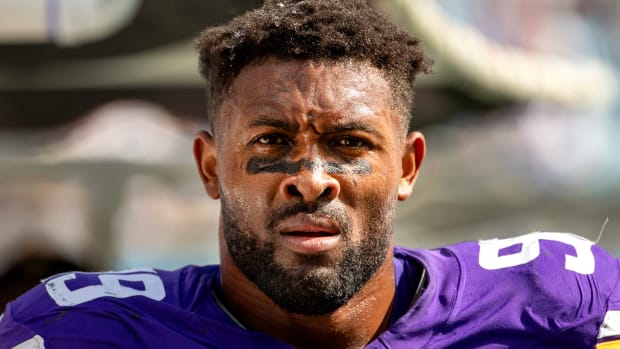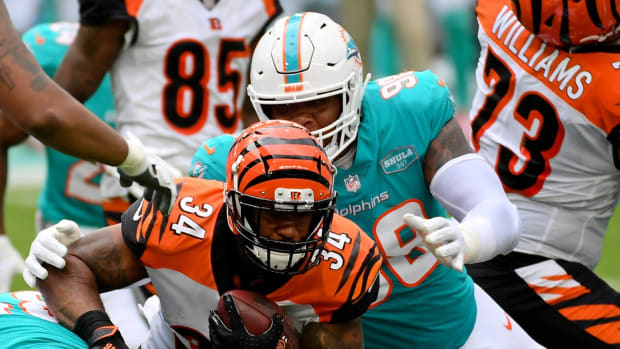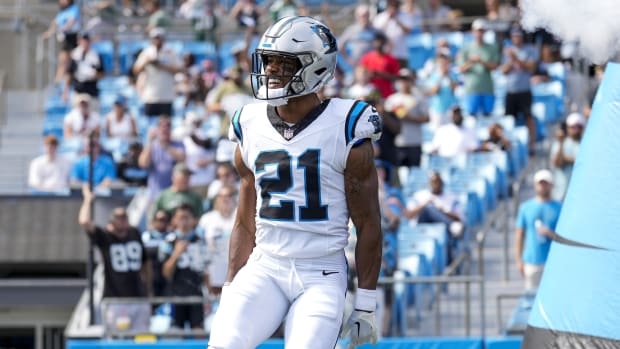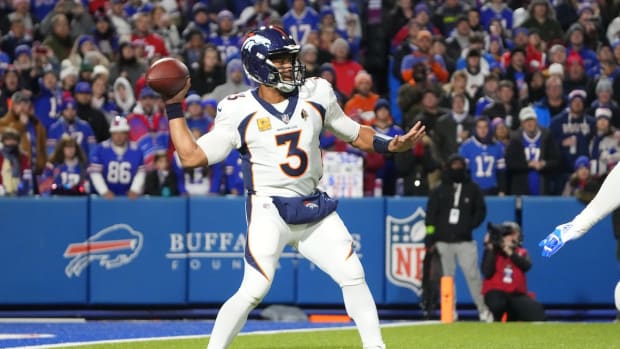‘Philly Special’ Was Drawn Up By a Mad-Scientist Coach on a South Carolina Baseball Field in 2011
“Philly Special,” birth name “Detroit,” reached its zenith on Feb. 4, 2018, in Minneapolis, when Nick Foles suggested to Doug Pederson that the Eagles run the greatest trick play in Super Bowl history. On fourth-and-goal from the New England 2, Foles lined up in shotgun, then moved down toward the right side of the line; running back Corey Clement took the direct snap and pitched to tight end Trey Burton coming around from the left, and Burton hit a wide-open Foles in the endzone. The touchdown extended Philly’s lead over the Patriots to 22-12 with 34 seconds left in the first half.
That play had been previously executed by the Bears against the hometown Vikings, in the very same end zone, a little more than a year earlier. “We called it the ‘Clemson Special,’ ” says former Bears coordinator Dowell Loggains. “This high school in Texas ran it, and before that Clemson ran it.” The play was a favorite of Chad Morris, former offensive coordinator at Clemson and now Arkansas’s head coach. And where did he come up with it?
As it happens, Morris got the play via napkin, from a good ole boy offensive coach from South Carolina named Hunter Spivey.
Philly Special was born, as far as we can tell, not on the manicured grounds of Westlake High, Nick Foles’ alma mater in Austin (where it was called “Money 5”), or at the state-of-the-art practice facilities in Clemson, S.C., but on a dirt baseball field in West Columbia, S.C. In 2011, Spivey was tasked with building the football program from scratch at the brand new Gray Military Academy. The program drew standout South Carolina high school athletes who required a year or two of post-graduate schooling to earn the grades or test scores to play major college football. Lacking a locker room, they dressed for practice in the parking lot.
“We practiced on an old baseball field with no grass on it,” says Zach Blair, Spivey’s first starting quarterback at Gray. “There were a lot of good athletes from all over the state looking for an opportunity. We lived in these rundown apartments in Columbia. We loved it.”
Early in the season Spivey came up with a trick play for the goal line. Over the years his players started calling these creative spasms “Spivey Specials.” Says former Gray receiver Evan Stone: “He’s like a mad scientist.”
To this day Spivey, a former Coastal Carolina assistant, gets a bigger kick out of a successful trick play than a well-executed touchdown drive. “It’s more satisfying than a good iso run or a touchdown pass,” says Spivey, now an assistant at Valdosta High in Georgia. “No doubt about it. When something like that works, it’s a big deal.”
The key teaching point, Spivey says, is the body language of the quarterback. In the Super Bowl, Foles left his shotgun position and hollered what sounded like a check to the left interior of the offensive line, then the right side. He paused for a moment while the direct snap and reverse pitch were being executed, then bolted to the right flats and caught the easy toss from Burton for six.
“Foles would have probably got an 80% from me,” Spivey says. “If you notice the way his chest was pointing to the sideline, that’s not natural. A savvy defender would say, Hey, that guy’s trying to slip out to the flats.
“I can’t tell you how many times I’ve had to rerun that play and coach the quarterback’s demeanor and body language and tone of voice.”
Gray Military Academy (now Gray Collegiate Academy) called the play Detroit—the D stands for direct snap—and ran it successfully numerous times in 2011. A year later Spivey was at a coaching clinic in South Carolina when he struck up a conversation with then-Clemson OC Chad Morris. Spivey described a two-point conversion play that worked nearly without fail, and he dared Morris to use it. “We start talking ball, we get all crazy, like kids on Christmas,” Spivey says. “I told him, you ain’t gon’ run it.”
A grinning Morris promised Spivey he would. Two weeks later Spivey got a phone call. Morris needed more information.
“He drew it up right then and there on a napkin for me,” says Morris. “Now, knowing a play on a napkin is one thing, but knowing how to coach it is another thing.”
Says Spivey: “He called me and said, I know there’s more to it.”
The nuances of the play passed through the grapevine, through word of mouth, and of course through film. Clemson ran it a handful of times, with DeAndre Hopkins tossing a two-point conversion to Tajh Boyd in 2012. The Tigers called it Detroit, as Spivey had named it. From there it seeped through football. Westlake High in Texas first ran it in 2014, according to its coach, Todd Dodge; after the Super Bowl, former Westlake quarterback Sam Ehlinger, now at Texas, tweeted out a clip of him running the play in 2015. The Patriots themselves executed a version of the play in the 2015 season, with Tom Brady catching a pass for a first down against—of all teams—the Eagles. A year later Bears receiver Cam Meredith threw a touchdown pass to quarterback Matt Barkley in Week 17 against the Vikings, a play that Eagles assistant Press Taylor recalled and suggested to the staff that the Eagles install for the 2018 postseason.
“I think the key to it,” says Loggains, “is that you have a receiver who can actually throw the ball reliably. We knew Cam could because he played quarterback early in college.”
But the first player to catch the pass was Blair. Gray Academy ran it four or five times that 2011 season, Spivey says. When Blair went down with a knee injury, backup quarterback Cameron Cox was the second to run the play. Spivey recalls Cox dropping one of the passes; teammates think he may have caught one for a touchdown. The truth is lost to some box score in a dusty folder somewhere in South Carolina, and a stack of DVDs nobody can find.
Its latest iteration was seen by millions around the world, and has become so emblematic of Philly’s balls-out upset of the Patriots that the Eagles are trying to trademark the name “Philly Special” for merchandising purposes. But across South Carolina, a handful of young men who knew its real name watched the play unfold and flooded their old coach’s inbox with one exclamation: “Detroit!”
“I love the attention Coach Spivey’s getting for this,” says Stone. “He’s a hell of a coach, and he could be at any level. He deserves all of this.”
Question or comment? Email us at talkback@themmqb.com.






































